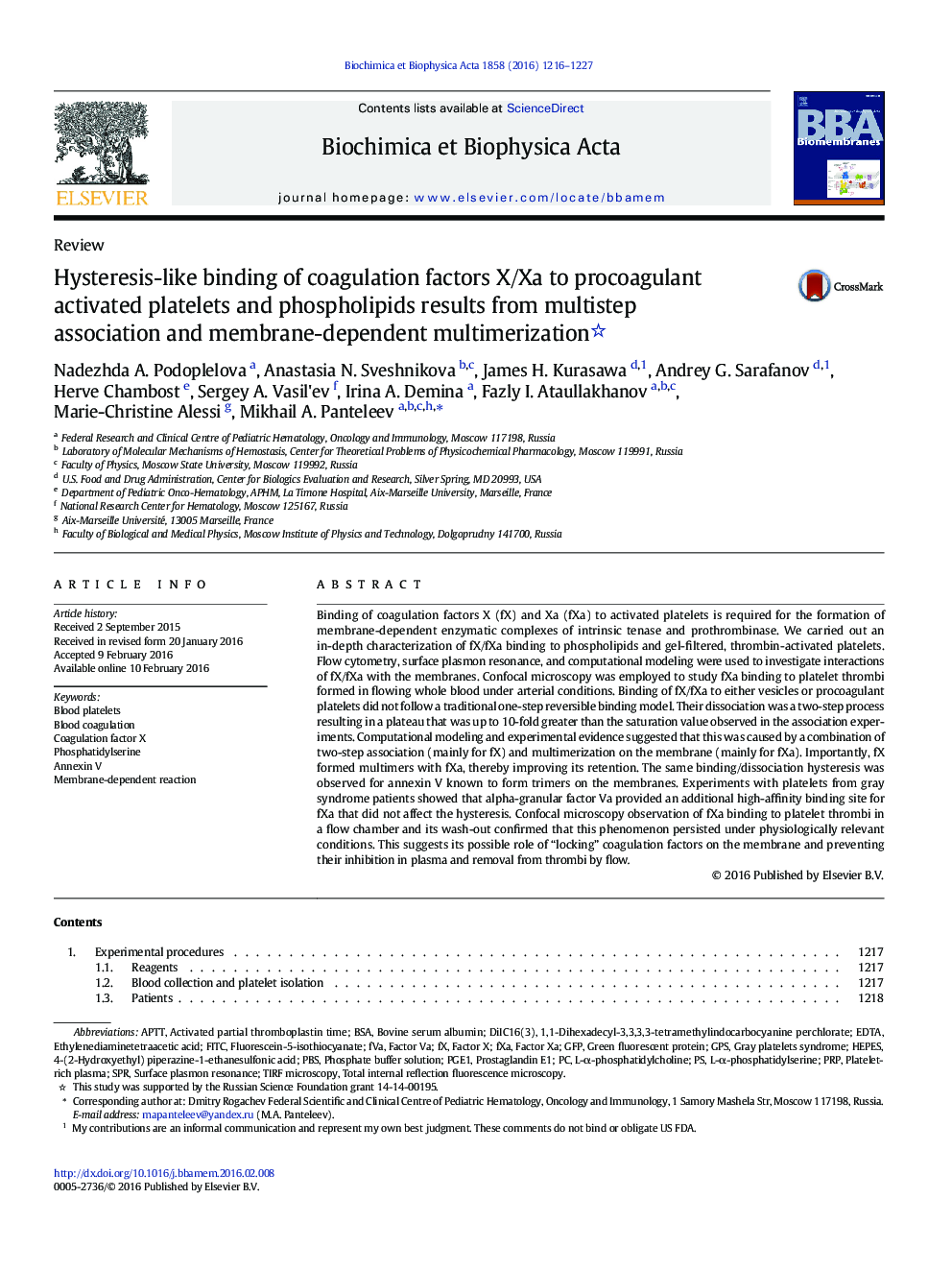| Article ID | Journal | Published Year | Pages | File Type |
|---|---|---|---|---|
| 1943956 | Biochimica et Biophysica Acta (BBA) - Biomembranes | 2016 | 12 Pages |
•Coagulation factors X and Xa are retained on phospholipid membranes upon dilution.•Their hysteresis is due to two-step association and oligomerization, including X–Xa.•This phenomenon can be important to retain bound factors in thrombi under flow.
Binding of coagulation factors X (fX) and Xa (fXa) to activated platelets is required for the formation of membrane-dependent enzymatic complexes of intrinsic tenase and prothrombinase. We carried out an in-depth characterization of fX/fXa binding to phospholipids and gel-filtered, thrombin-activated platelets. Flow cytometry, surface plasmon resonance, and computational modeling were used to investigate interactions of fX/fXa with the membranes. Confocal microscopy was employed to study fXa binding to platelet thrombi formed in flowing whole blood under arterial conditions. Binding of fX/fXa to either vesicles or procoagulant platelets did not follow a traditional one-step reversible binding model. Their dissociation was a two-step process resulting in a plateau that was up to 10-fold greater than the saturation value observed in the association experiments. Computational modeling and experimental evidence suggested that this was caused by a combination of two-step association (mainly for fX) and multimerization on the membrane (mainly for fXa). Importantly, fX formed multimers with fXa, thereby improving its retention. The same binding/dissociation hysteresis was observed for annexin V known to form trimers on the membranes. Experiments with platelets from gray syndrome patients showed that alpha-granular factor Va provided an additional high-affinity binding site for fXa that did not affect the hysteresis. Confocal microscopy observation of fXa binding to platelet thrombi in a flow chamber and its wash-out confirmed that this phenomenon persisted under physiologically relevant conditions. This suggests its possible role of “locking” coagulation factors on the membrane and preventing their inhibition in plasma and removal from thrombi by flow.
Graphical abstractFigure optionsDownload full-size imageDownload high-quality image (215 K)Download as PowerPoint slide
